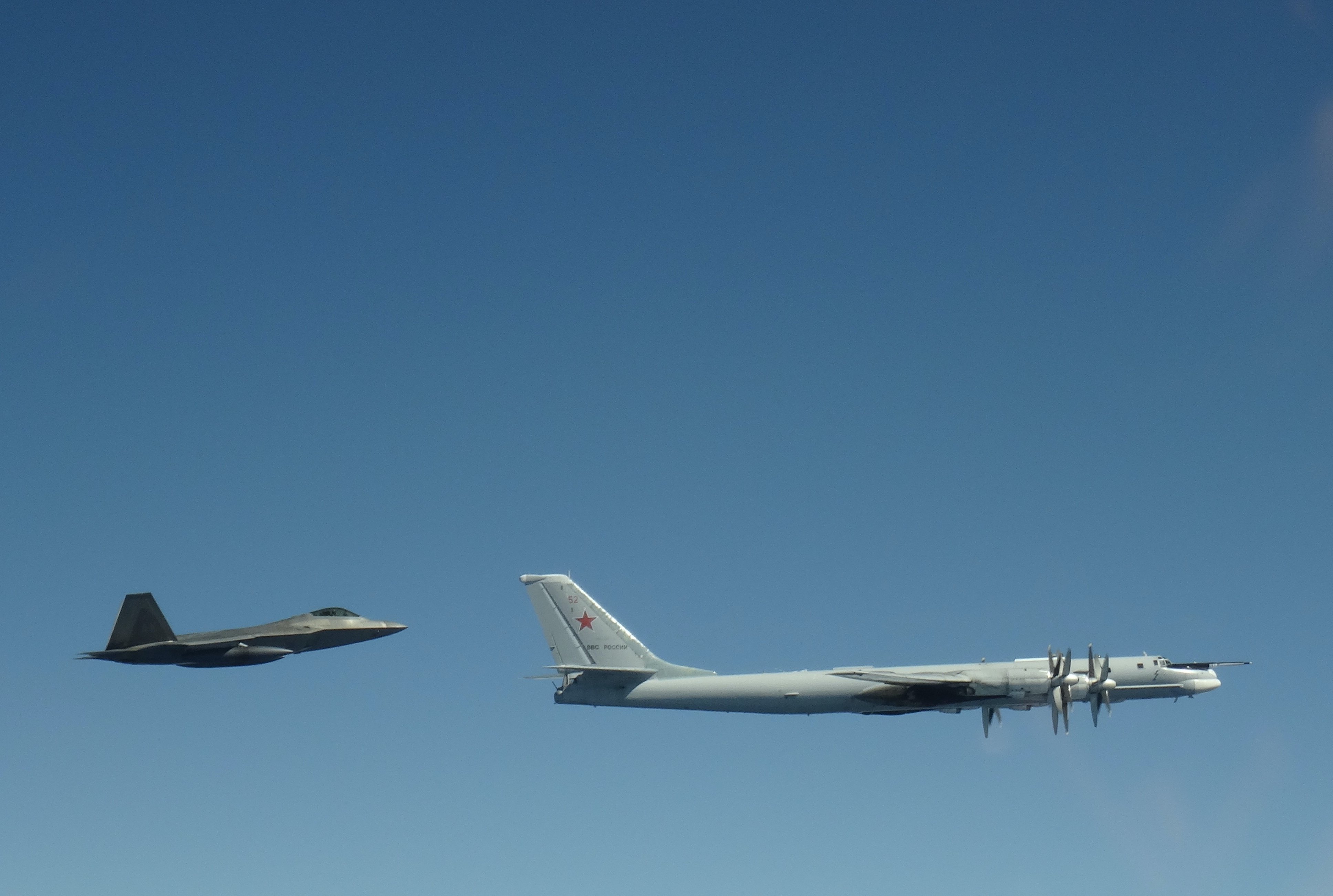
This story has been updated to distinguish between Gen. Glen VanHerck’s role leading North American Aerospace Defense Command and U.S. Northern Command.
The Russian military is spending “hours” in airspace near Alaska when it performs flyovers in the region, the head of North American Aerospace Defense Command said on Wednesday.
Air Force Gen. Glen VanHerck, who also leads U.S. Northern Command, attributed Russia’s expanding activities in the Arctic region to the current great power competition dynamic.
“We’re back in the peer competition,” he said during a Defense Writers Group discussion. “Clearly, Russia is trying to reassert on a global stage their influence and their capabilities. That’s exactly what’s going on. It’s great power competition,” VanHerck said when asked why Russia is performing more flights near Alaska.
“The difference between the past and now is the intercepts are more complex – multi-axis, multi-platforms and often times they’ll enter the [air defense identification zone] and stay for hours,” he added. “That would be the significant difference. But why this is ongoing? It is playing out as the peer competition that we’ve talked about.”
Earlier this month, VanHerck told the Senate Armed Services Committee that in 2020 “NORAD responded to more Russian military flights off the coast of Alaska than we’ve seen in any year since the end of the Cold War.”
“These Russian military operations include multiple flights of heavy bombers, anti-submarine aircraft, and intelligence collection platforms near Alaska. These efforts show both Russia’s military reach and how they rehearse potential strikes on our homeland. Last summer, the Russian Navy focused its annual OCEAN SHIELD exercise on the defense of Russia’s maritime approaches in the Arctic and Pacific,” VanHerck told the panel in his written testimony.
“The multi-fleet exercise, intended in part to demonstrate Russia’s ability to control access to the Arctic through the Bering Strait, included amphibious landings on the Chukotka Peninsula opposite Alaska, as well as anti-submarine patrols and anti-ship cruise missile launches from within the U.S. Exclusive Economic Zone,” he added.
The Russian military has bolstered its presence and activity in the Arctic region – actions U.S. military officials have expressed concern over in recent years. This month, three of Russia’s submarines smashed through icecaps in the Arctic while exercising in the region, according to a recent Reuters report.
Asked what he makes of that recent Russian activity in the Arctic and how the U.S. is exercising there, VanHerck pointed to the U.S. military’s annual Ice X exercise and the Global Information Dominance Exercise all of the combatant commands participated in earlier this month.
“We’ve closely partnered with NATO and [U.S. European Command] as far as the bomber task force and conducting operations that show our capability as those forces return home as well. And the GIDE experiment that we just did as well helps get after the capabilities,” VanHerck told reporters.
“But I’m aware of what you’re talking about and I would tie that back to global power – great power competition and again, strategic messaging,” he said. “That’s what that is.”





